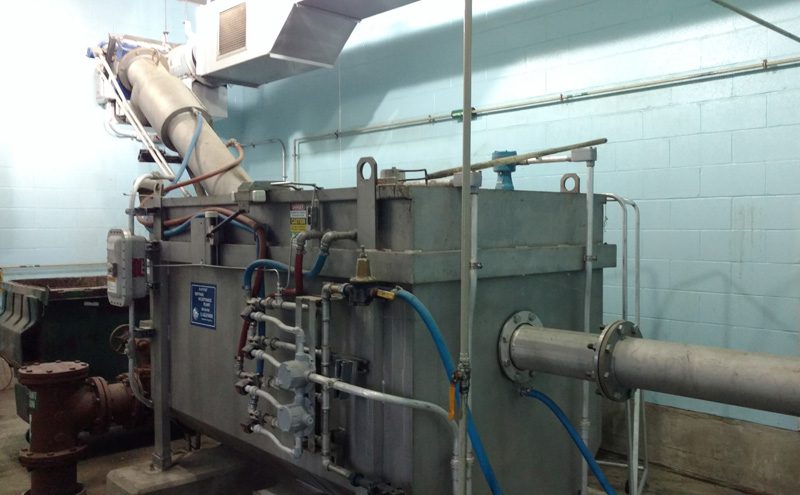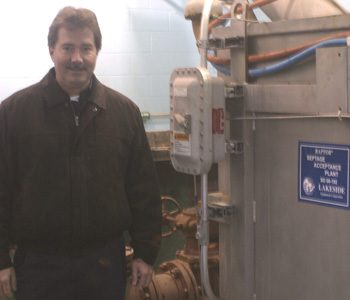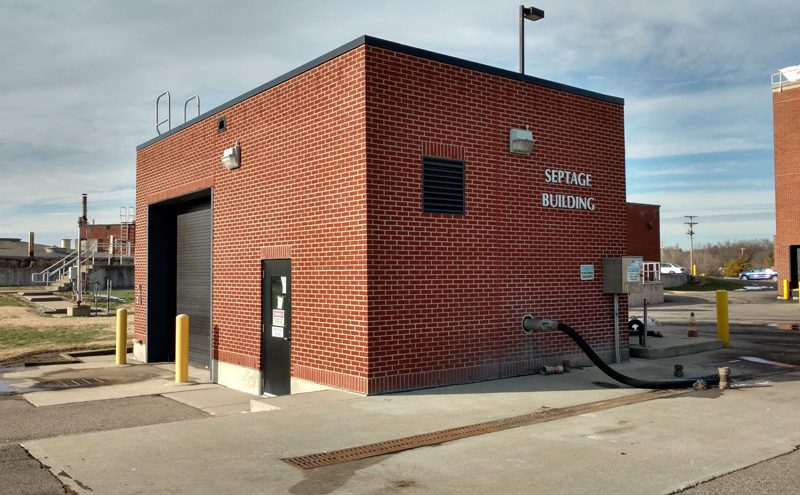
US water treatment specialist Lakeside equipment provides some context behind the decision to employ its Raptor Septage Acceptance Plant (SAP) in the wastewater treatment facilities of the City of Newark, Ohio. The article explains how the system works and why it was chosen by Columbus-based Smith Environmental, a group representing manufacturers of water and wastewater process equipment in the State of Ohio.
With over twenty five years service at the City of Newark’s Wastewater Treatment Plant in Ohio, Superintendent Darin Wise knows his site inside out. Built in 1948, the Wastewater Treatment Plant is one of the largest investments owned by the City of Newark, handling 2.86 billion gallons of wastewater pa. The enduring facilities and equipment are a testament to its team’s continual preventative maintenance.
Faced with more stringent EPA treatment requirements laid down in 1984, the city successfully met its 1 July, 1988 deadline. In doing so, it also significantly improved the water quality in the Licking River, enhancing its recreational potential as well as the aquatic habitat.
1997 saw the installation of a new UV Disinfection System, which disinfects the treatment plant’s effluent and has eliminated the need to add tons of chemicals to the water during the summer season.
Two major capital improvement projects completed in 1999 & 2000 included construction of a new Influent Screen Building for fine process screenings for final disposal – and a new SCADA System for real time data for greater accuracy and efficiency.
‘Best performing’
A decade ago, electrical switchgear and substation/septic receiving projects were completed, resulting in the introduction of a new piece of equipment that – according to Newark’s eagle-eyed maintenance team – is still, ten years on, the best performing and most trouble-free piece of equipment on site.
Plant Superintendent Darin Wise said: “Until we were able to invest in a new septic acceptance facility, we had a pump station with a grinder that couldn’t best cope with rags and hair. Debris such as plastics were also getting into our digesters and adversely affecting the quality of our biosolids”.

After various trial demonstrations, and with space at a premium at the Newark site, a self-contained, fully automatic Raptor Septage Acceptance Plant (SAP) made by Lakeside Equipment was chosen. The purchase of the Lakeside SAP was managed by Columbus-based Smith Environmental – a team of professionals representing manufacturers of water and wastewater process equipment in the State of Ohio.
Designed with a heavy-duty 3-plane fine screen, it benefits from a rotating rake that passes through the full depth of the basket bars to remove debris from the screening area. The rotating rake deposits collected screenings into a central screw conveyor hopper that leads to a transport tube. Screenings are spray-washed in two stages to return organic materials to the liquid stream. The first wash is over the screen basket and the second takes place in the transport tube – just before the compaction zone – to wash organics into the flow stream. The all stainless steel shafted screw conveyor transports washed screenings to a discharge chute – and when debris drops to the storage container, the total solids content is typically over 40 percent – passing the EPA paint filter test.
“Lakeside gave us plenty of very good references”, added Darin Wise, “and that fact that their unit was four-feet smaller than other manufacturers made everything easier – and as a bonus, more economic. Also, with other systems there was a need to remove the brushes, so it all made sense”.
Around 2.75 million gallons of septic waste from all over Licking County is treated at Newark every year, delivered (depending on the season) from 6-10 trucks per day, up to 25 in the summer.
An operator control panel located on the outside of the building allows haulers to initiate the off-loading cycle and an automated truck scale that uses a swipe card system allows drivers to weigh in and out, usually in just five to ten minutes. All of this goes on without the need for employee interaction. A waste report is automatically generated into the billing software.
“When we began using the Lakeside SAP”, added Darin Wise, “we were using a rock trap, but it filled up too quickly, sometimes from just one load, so it wasn’t best servicing our purposes. This is probably because of the gravel that’s used in this part of the world to make septic tanks, which tends to deteriorate, so therefore gets sucked out during emptying. Working closely along Lakeside, we modified it to a 6-inch outlet on the bottom on the tank and since then suck the rocks out every fortnight as part of our plant’s continual preventative maintenance program”.

‘Very good going for ten years’
“We thought that the rocks would bend the rake and the comb on the Septage Acceptance Plant”, continued Darin Wise, “but we’ve come to learn that they don’t hurt it. We’ve only had to straighten things out twice, but we’ve had no real problems, which is very good going for ten years. Lakeside’s Raptor has been an extremely reliable piece of equipment that has also given us the option of sending the treated wastewater to the head of the plant or directly to our digesters.






